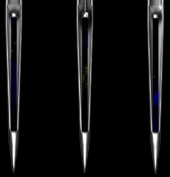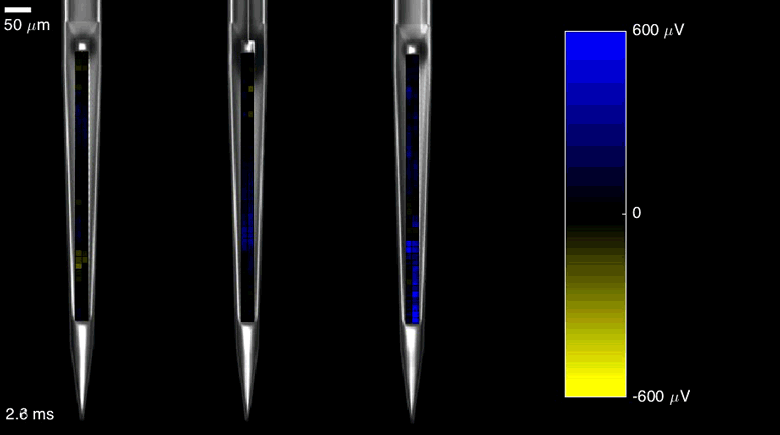Jorg Scholvin, Justin P. Kinney, Jacob G. Bernstein, Caroline Moore-Kochlacs, Nancy Kopell, Clifton G. Fonstad, Edward S. Boyden, Massachusetts Institute of Technology & Boston University, USA
Neural recording electrodes are important for understanding neural codes and brain dynamics. The need for close-packed neural recording electrodes arises from the desire to record the activity of a single neuron from multiple points in space, to facilitate automated data analysis. Here we present the design and implementation of close-packed silicon microelectrodes, to enable spatially oversampled recording of neural activity in a scalable fashion. Our probes are fabricated in a hybrid lithography process, resulting in a dense array of recording sites connected to submicron dimension wiring. We demonstrate an implementation of probes comprising up to 1000 recording sites, each 9 x 9 μm, and set at a pitch of 11 μm. We introduce design automation and packaging methods that allow us to readily create a large variety of different designs, so that probes can be tailored to specific neuroscientific questions. We perform neural recordings with a close-packed probe in the live mammalian brain, illustrating the spatial oversampling potential of closely packed electrode sites. Accompanying designs and additional images are posted online (http://www.scalablephysiology.org/probes); see http://syntheticneurobiology.org for other tools). The animated figures were created by David Francisco Theurel and the Max Tegmark lab at MIT, based on recorded data from a 3-shank probe. The shanks are set at a 300 mm pitch, and each shank contains 2×42 close-packed recording sites.
Keywords: Electrodes, Probes, Microelectrodes, Neural Recording, Silicon Probe


